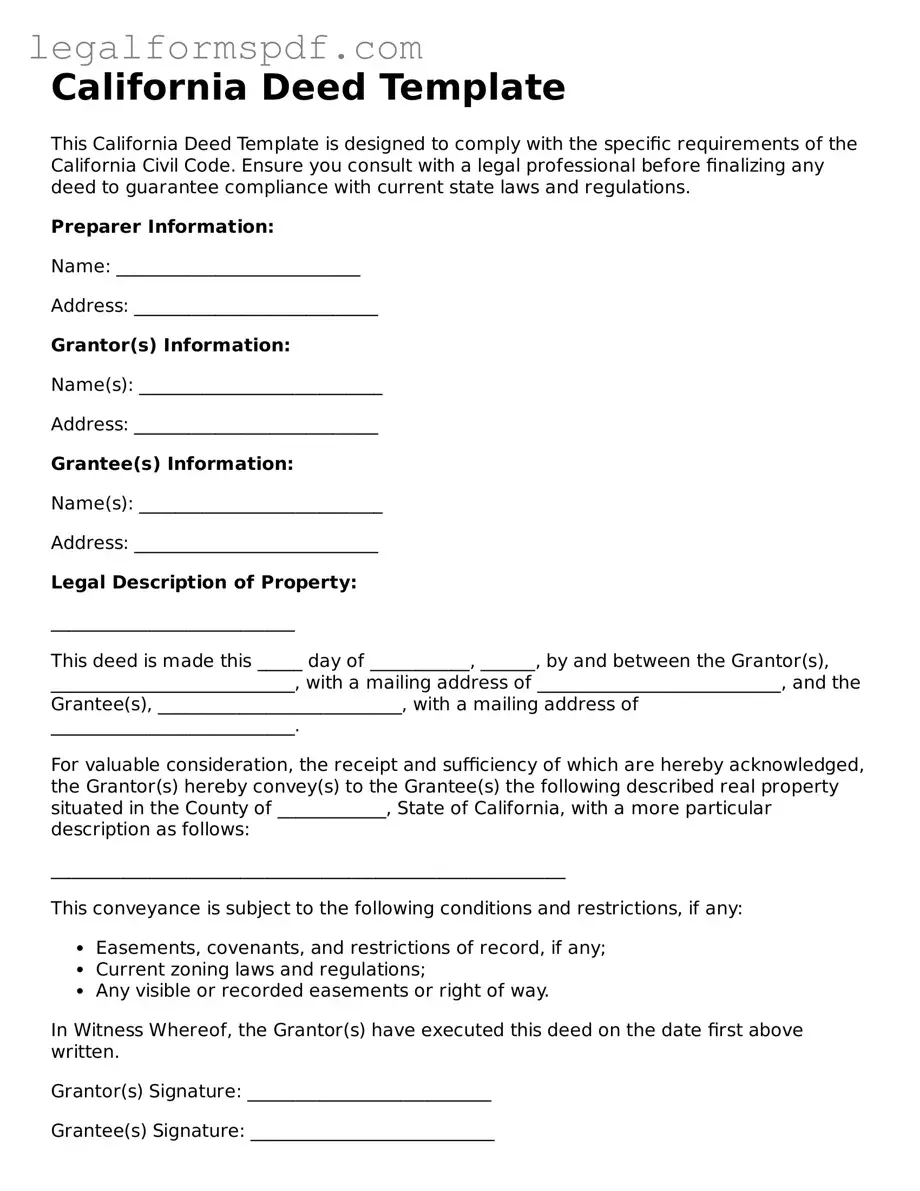California Deed Template
This California Deed Template is designed to comply with the specific requirements of the California Civil Code. Ensure you consult with a legal professional before finalizing any deed to guarantee compliance with current state laws and regulations.
Preparer Information:
Name: ___________________________
Address: ___________________________
Grantor(s) Information:
Name(s): ___________________________
Address: ___________________________
Grantee(s) Information:
Name(s): ___________________________
Address: ___________________________
Legal Description of Property:
___________________________
This deed is made this _____ day of ___________, ______, by and between the Grantor(s), ___________________________, with a mailing address of ___________________________, and the Grantee(s), ___________________________, with a mailing address of ___________________________.
For valuable consideration, the receipt and sufficiency of which are hereby acknowledged, the Grantor(s) hereby convey(s) to the Grantee(s) the following described real property situated in the County of ____________, State of California, with a more particular description as follows:
_________________________________________________________
This conveyance is subject to the following conditions and restrictions, if any:
- Easements, covenants, and restrictions of record, if any;
- Current zoning laws and regulations;
- Any visible or recorded easements or right of way.
In Witness Whereof, the Grantor(s) have executed this deed on the date first above written.
Grantor(s) Signature: ___________________________
Grantee(s) Signature: ___________________________
State of California
County of ____________
On this _____ day of ___________, ______, before me, ___________________________ (name and title of the officer), personally appeared ___________________________, who proved to me on the basis of satisfactory evidence to be the person(s) whose name(s) is/are subscribed to the within instrument and acknowledged to me that he/she/they executed the same in his/her/their authorized capacity(ies), and that by his/her/their signature(s) on the instrument the person(s), or the entity upon behalf of which the person(s) acted, executed the instrument.
Witness my hand and official seal.
(Seal)
Signature of Notary Public: ___________________________
